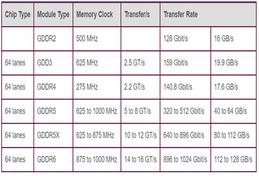LPDDR1 vs. LPDDR2 vs. LPDDR3 vs. LPDDR4 vs. LPDDR5: Key Differences
Advertisement
This article breaks down the differences between LPDDR1, LPDDR2, LPDDR3, LPDDR4, and LPDDR5, covering their clock frequencies, speeds, bus sizes, supply voltages, and prefetch sizes.
What is LPDDR?
LPDDR, which stands for Low Power Double Data Rate, is a type of SDRAM (Synchronous Dynamic Random Access Memory) designed for mobile devices. It’s a volatile memory standard optimized for low power consumption, making it ideal for storing code, applications, and data in devices like smartphones, tablets, and laptops.
 Image Courtesy : Synopsys
Image Courtesy : Synopsys
Figure 1 illustrates the evolution of LPDDR technology from LPDDR1 to LPDDR5.
For a deeper dive, check out the advantages of LPDDR5 DRAM.
LPDDR Generations: Key Differences
The following table highlights the key differences between the various LPDDR generations:
| Specifications | LPDDR1 | LPDDR2 | LPDDR3 | LPDDR4 | LPDDR5 |
|---|---|---|---|---|---|
| I/O bus clock frequency (MHz) | 200 MHz, 266.7 (For LPDDR-1E) | 400 MHz, 533.3 (For LPDDR-2E) | 800 MHz, 1067 (For LPDDR-3E) | 1600 MHz, 2133 (For LPDDR-4X) | 3200 MHz |
| Prefetch size | 2 bit | 4/2 bit | 8 bit | 16 bit | 32/16 bit |
| Data transfer rate or speed in Mbps | 400, 533.3 (for LPDDR-1E) | 800, 1067 (for LPDDR-2E) | 1600, 2133 (for LPDDR-3E) | 3200, 4267 (for LPDDR-4X) | 6400 |
| Supply voltage | 1.8 V | 1.2, 1.8 V | 1.2, 1.8 V | 1.1, 1.8 V | 0.5, 1.05, 1.8 V |
| Command or address bus size | 19 bits, SDR | 10 bits, DDR | 10 bits, DDR | 6 bits, DDR | DDR |
Advertisement
 RF
RF


